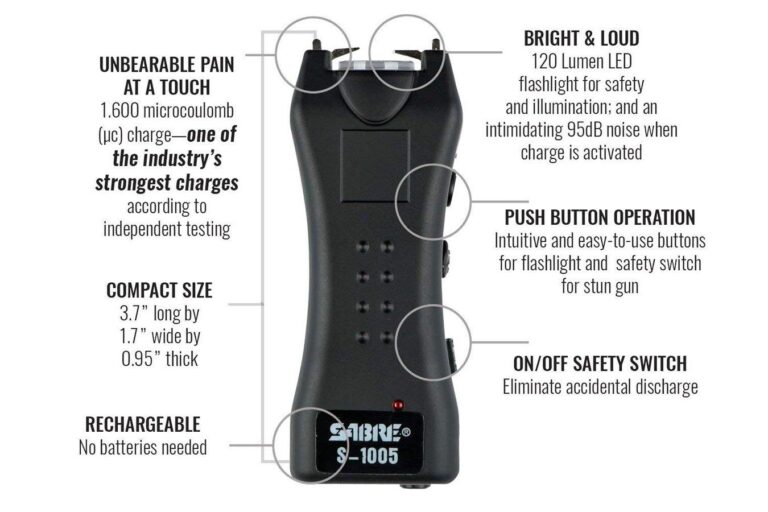Table of Contents
- Understanding the Common Causes of Stun Gun Activation Delays
- Diagnosing Electrical and Mechanical Issues Affecting Performance
- Effective Maintenance Practices to Ensure Immediate Activation
- Choosing High-Quality Components to Prevent Future Delays
- To Conclude
Understanding the Common Causes of Stun Gun Activation Delays
Activation delays in stun guns are often a result of a few key factors that affect the device’s performance. Battery issues rank highest among these causes. When the power source is drained or faulty, the electrical charge required to generate an immediate shock weakens, resulting in sluggish activation. Additionally, exposure to moisture or environmental contaminants can interfere with the internal circuits. Dirt, dust, or corrosion inside the stun gun disrupt the electrical pathways, leading to inconsistent responses and frustrating delays when you need it most.
Another common culprit is the wear and tear of electrical components over time. The tiny parts responsible for initiating the discharge can lose efficiency or become misaligned through frequent use or improper storage. It’s also important to consider user handling errors-such as not holding the device firmly or pressing the activation button incorrectly. Regular inspection of the stun gun’s electrodes and maintaining a clean, dry storage environment can prevent these issues. Incorporating routine checks and recommended upkeep ensures your device is primed to function instantly every time.
Diagnosing Electrical and Mechanical Issues Affecting Performance
Electrical faults often lie at the heart of activation delays in stun guns. Begin by inspecting the battery connections for any signs of corrosion or wear, as poor contact can disrupt the power flow and cause sluggish performance. Use a multimeter to check voltage levels and ensure the power output meets the manufacturer’s specifications. Additionally, examine the internal wiring for any loose connections or frayed wires that might interrupt the circuit. Regular maintenance, including cleaning the contact points with isopropyl alcohol, can prevent oxidation buildup, which impairs electrical conductivity.
Mechanical components such as the trigger mechanism and safety switch can also contribute to delayed activation if they’re jammed or worn out. Check that the trigger moves freely without resistance or sticking, and lubricate pivot points with a non-conductive lubricant designed for electronics. Verify that the safety switch clicks firmly and disengages completely to allow immediate activation. Some common issues causing mechanical delays include dust accumulation inside the casing and misaligned internal parts due to drops or impacts. A careful disassembly and reassembly process, following manufacturer guidelines, often resolves these issues effectively.
- Regularly test the stun gun’s response time to catch problems early.
- Replace batteries with high-quality, compatible brands.
- Schedule routine maintenance checks to keep electrical and mechanical systems in optimal condition.
Effective Maintenance Practices to Ensure Immediate Activation
To guarantee your stun gun activates instantly when needed, regular upkeep is essential. Start by cleaning the electrodes with a soft cloth dipped in isopropyl alcohol to remove any dirt or debris that may obstruct the electrical current. Additionally, inspect the battery contacts and terminals for signs of corrosion or wear, replacing batteries promptly when their charge diminishes. Avoid using expired or low-quality batteries as they can cause delayed activation or inconsistent performance.
Implementing a routine check system can prevent potential malfunctions. Make it a habit to:
- Test the stun gun briefly in a controlled environment once a month to ensure responsiveness.
- Store the device in a dry, cool place to protect internal components from moisture and heat.
- Keep the activation button and safety mechanism free from dirt and properly lubricated if applicable.
Adhering to these maintenance strategies not only extends the lifespan of your stun gun but also ensures its immediate activation, providing peace of mind whenever personal safety is at stake.
Choosing High-Quality Components to Prevent Future Delays
When maintaining stun guns, the quality of every component plays a critical role in ensuring flawless performance without frustrating delays. Opting for premium-grade parts-from internal wiring and switches to capacitors and electrodes-can dramatically reduce the risk of malfunction. High-quality components are engineered to withstand high voltage and repetitive activation cycles, which not only improves reliability but also extends the device’s lifespan. Avoiding cheap substitutes prevents corrosion, shorts, and inconsistent electrical flow that often cause activation lag.
Investing in trusted brands and verified suppliers guarantees consistency in the manufacturing process, which translates to better compatibility and smoother operation. To further safeguard against future problems, consider these factors when sourcing components:
- Durability ratings suited to stun gun applications
- Resistance to moisture and temperature fluctuations
- Compliance with industry safety standards
- Manufacturer warranties and customer reviews
By prioritizing component quality, you lay a solid foundation that minimizes disturbances caused by aging parts or substandard materials-preserving your stun gun’s rapid responsiveness every time you need it.
To Conclude
In conclusion, addressing stun gun activation delays is crucial for ensuring your device performs reliably when you need it most. By regularly maintaining your stun gun, checking battery health, and following proper usage guidelines, you can significantly reduce the chances of activation lag. Remember, prevention is always better than troubleshooting under pressure. Stay proactive with routine care and testing to keep your stun gun ready and responsive. With these steps in mind, you’ll boost both your confidence and safety, knowing your device will deliver the immediate performance you depend on.Check Our Other Blogs
- StunGun – Your Trusted Source for Stun Guns, Laws, and Self-Defense Tips
- PepperSprayLaws – Your Trusted Resource for Pepper Spray Information
- StunGunLaws – Your Trusted Guide to Stun Gun Legality and Safety





